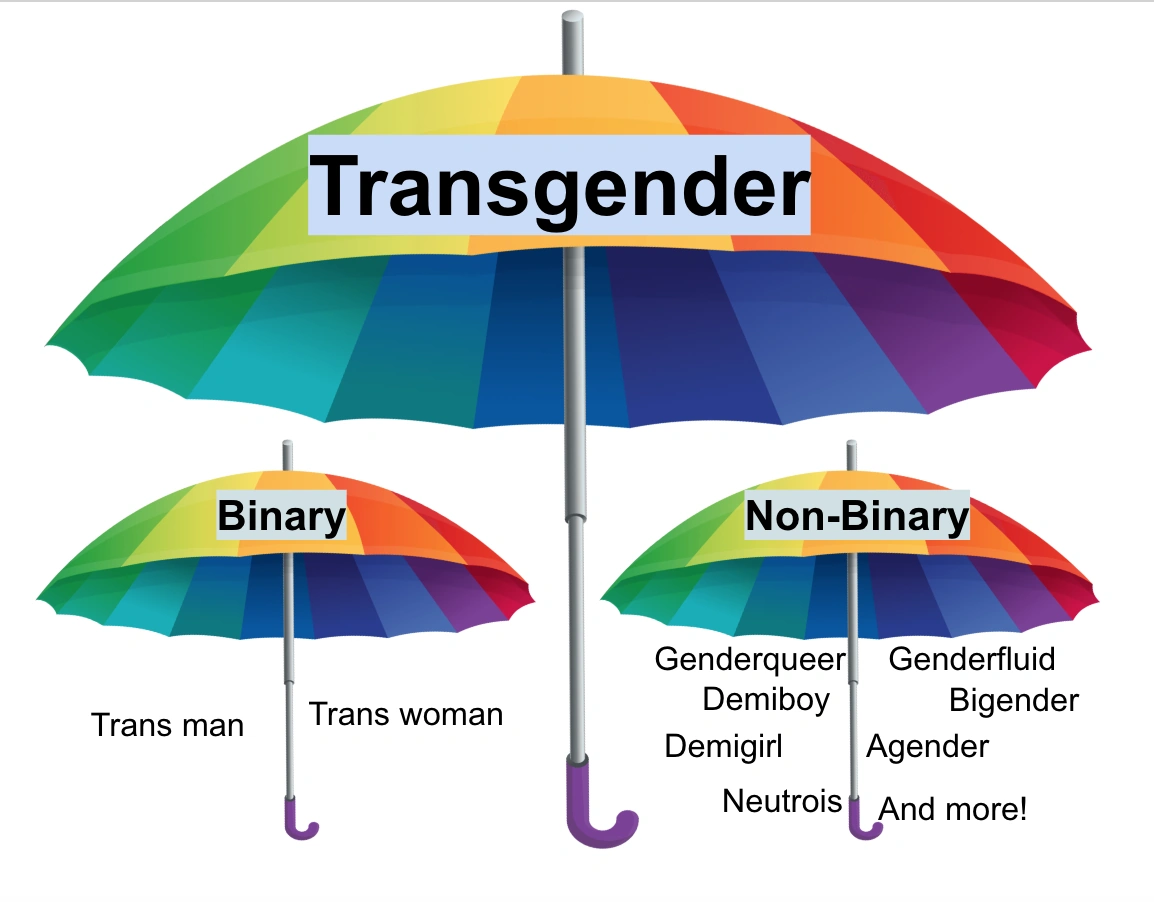How to Audio Drama 202: Writing Trans Characters

One of the best things about indie audio drama is that you can create the representation you want. There’s no board approving your show for air, no executives to be placated, no market research needed to justify the inclusion of certain characters. Your story can be exactly as diverse as you want to make it, including with trans characters.
As someone who never sees themself in mainstream media, this is what draws me to audio drama. Creating the representation I want to exist in the stories I consume is one of the joys of writing, but it’s important to do it right. In this open expanse, questions come up: When is it okay to create a character from a demographic you don’t share? How does one avoid common pitfalls? What should and shouldn’t I do?
I am often asked these questions about writing good trans characters, and in an effort to answer them, I’ve enlisted the help of several trans and nonbinary podcasters to help break it down. If you’re confused by any of the terms I use, I recommend looking them up in the Trans Language Primer, a fantastic resource for the language around gender. It should be noted that “trans” and “nonbinary” are not the same thing, but for the purpose of this article I am considering nonbinary to be under the trans umbrella, both meeting the definition of “not cis.”
This article cannot be a thorough guide covering all aspects of writing a trans character. It is very important to me that you don’t take “I read Tal’s article!” as a blanket excuse to do what you want in your show. The trans experience is wide and varied, and while I have made an effort to capture some of that depth, this article can’t possibly cover every aspect of transness–it is a starting place. What I will be covering is basic dos and don’ts. We’ll touch on what a trans and nonbinary audience wants to see as well as what some glaring red flags in scripts and shows are.
Read more: 14 Audio Drama Podcasts to Get You Hooked on Fiction
No deadnames
First and foremost, nearly everyone I interviewed said don’t deadname or misgender your character. I cannot overstate this enough. “Unless it is plot relevant, you really don’t need to mention that they’ve got a deadname,” said Cole Burkhardt, creator of Null/Void and contributor to Discover Pods. “If you do have a situation that requires it, it should be treated/remarked upon in the same way that calling someone a slur would. It is a bad thing to deadname/misgender someone, and the narration should reflect that.”
A deadname is a name used by a person before their transition, sometimes called a “legal name” or “birth name.” It is an enormous red flag for a deadname to be dropped casually; just like using the wrong pronouns, deadnaming is invalidating, disrespectful, and should not be done lightly in a story. It’s almost never relevant to the plot, and unless you are directly and deliberately addressing transphobia you shouldn’t include it.
Cast trans characters accordingly
The second thing almost everyone said was to cast trans actors in trans roles.
“It always makes me uncomfortable and upset when cis folks are cast in trans roles–especially when a cis woman is cast to play a trans man or a cis man is cast to play a trans woman,” said Rue Dickey, voice actor and sensitivity reader. “Just like this problem in TV and film, it adds to the stereotype that trans folx are just cis people ‘pretending’ to be a different gender.”
Erin Kyan, co-creator of Love & Luck, is of the same opinion. He said, “If you do have an explicitly trans character and you are a cis showrunner, you should only have trans actors in those roles,” and breaks down why in three parts:
- Trans actors do not get as many roles as no one wants to cast them as cis characters, so they should be given priority for trans roles.
- Trans actors are the only ones that can bring authenticity to that performance.
- Trans audiences deserve the comfort and safety of knowing they will be listening to a performance of a trans character by a trans actor.
When it comes to casting, I was also told by a nonbinary voice actor (who requested to be anonymous), “If a character is trans, make that evident in the casting call. Tell prospective voice actors so they can judge whether or not they fit the right demographics before auditioning.” I’d recommend taking this a step further and explicitly restricting auditions for trans characters to only trans voice actors. Go beyond having a preference for trans actors in your trans roles. Explicitly require it.
Caroline Mincks, creator of Seen and Not Heard, provided an example of what not to do in your casting calls: “When I was new on the scene I saw one asking specifically for a cis woman to play a trans man because he hadn’t transitioned yet, and then they planned to cast a cis man to be his post-transition voice.” This is insulting to trans voice actors, implying that they can’t be the voice of a character who is also trans.
Don’t gender voices based on sound
Furthermore, you should also not say in your casting call that your trans woman character has a male voice, or vice versa. Tuesday Ilbert, co-creator of Transmission Folklore, sums this up succinctly: “A trans man’s voice is a man’s voice, a trans woman’s voice is a woman’s voice, and a nonbinary person’s voice is a nonbinary voice regardless of vocal transition.” Estrogen does not affect one’s vocal register, and while testosterone does, not every transmasculine person is taking it.
Kyan said, “uncouple gender and voice expectations,” and this holds true for your trans roles and your cis roles. “Cis is not and shouldn’t be the deafult,” said Dickey. Some men have high voices, and some women have low voices, and you don’t have to constrain your casting to gendered expectations.
Along this line, I also invite you to consider casting trans actors as cis characters. Trans voice actors are incredibly versatile, and when you cast them solely in roles where they play trans characters, you vastly underestimate their capabilities. Emily VanDerWerff, co-creator of Arden, said, “I never see cis people casting trans people in cis roles, and I want to [see that happen].”
Make trans characters real characters
Nearly everyone said to make sure there is more to your trans character than simply being transgender. You should be able to describe any character’s personality beyond their gender identity, whether they’re cis or transgender. JV Hampton-VanSant, creator of RedWing, said, “Don’t feel like you need to make being trans the entire storyline.” Similarly, David Orión Pena, creator of Dos: After You, encouraged writers to “have a trans character whose arc doesn’t depend on being trans.” Dickey explains this in more depth, describing some of the best representation they’ve seen as “[a trans character who is] just as well rounded and meaningful as every cis character – and their transness is important but their story isn’t JUST about being trans.”
Evan Tess Murray, co-creator of This Planet Needs A Name, tells creators “please write in casual queer representation – queer characters whose identities are not the focus of the story. Let us exist in your world! Let us thrive!” People’s gender identity does not need to be plot-relevant. Trans folks exist without a reason to be trans – they just are, and you should reflect that in your stories. You don’t need a reason to have a trans character, and you don’t need to justify their inclusion in the story as any sort of plot point. Tau Zaman, creator of CARAVAN, said “When trans characters can be flawed and mediocre at things and occasionally slip into the background while offering a value to the world of the story simply for existing, I will say we have good trans rep.”
Do research–then, do more
However, a word of caution: “Go VERY carefully if you plan to make the fact that they’re trans, or parts of their personal journey, a plotline in your story,” said DJ Sylvis, creator of Moonbase Theta Out. “At that point you should at the least use sensitivity readers and ask for help… don’t assume you can write about what makes them trans without their input.” Cis writers should hire sensitivity consultants and pay for them if the trans experience of their character is key to the story. Mincks said, “There’s no one ‘correct’ way to be trans, so if you want to create trans characters, you have to do more research than you think.” The entire trans experience can’t be captured in a single google search.
When writing trans characters, you should also consider your own relationship towards gender, especially if you approach it from a western perspective. Zaman said, “Trans people are not monolithic and it is crucial that we expand our understanding of transness outside of the occidental concept of it. People in the Global South and their conceptions of gender are routinely dismissed as regressive notions — when their perspectives are noted at all, which is almost never.”
VanDerWerff said that creators must “be aware of the minefield that is years and years and years of bad trans representation.” In the same way you can’t capture the entirety of the trans experience in a google search, you can’t find every example of bad representation by looking it up. This is why you should seek out trans sensitivity readers when you’re writing about being trans. As a cis person, you won’t be able to fully capture that experience, and your missteps are more likely to create bad representation. Even with the aid of a sensitivity reader, there are still topics you should avoid. Murray says to cis creators, “Please don’t write coming-out narratives, and really don’t write trans pain or other forms of queer suffering. Those stories are ours; cis people almost always do them very badly.”
There are also more subtle things you might not consider when writing trans characters. “Avoid making your trans characters hypersexual or lacking any sort of sexuality.” said Burkhardt. Both of these extremes are stereotypical. Zaman said, “[Avoid] thinking that making someone a badass/supercool/evil-in-a-hot-way character is radical. It’s easy to think that ‘power’ in a story is ample substitute for good representation, but it’s not.” An example of this: a villainous trans woman who disguises herself by wearing stolen skin is transmisogynistic. There are also tropes you should avoid when writing about a character who is not canonically trans – for example, someone having gender reassignment surgery solely for revenge (especially as a part of a comical episode) is insensitive.
Read more: Stop Making People Out Themselves for Art
Listen to trans people
A final word of advice – if you mess up, don’t dig a deeper hole. What matters is taking corrections in stride and listening to the people who want you to do better. Mincks says to see being called out “as an opportunity, not just to do better yourself, but to set an example for others for how to gracefully accept corrections and improve in the future.” In my experience of calling people out for bad representation, what’s mattered to me is how they respond. I remember the people who listened when I messaged them far more fondly than I remember the people who engaged in a multi-hour debate with me. The first group are people I’d be happy to work with, the second group are people whose actions have shown they don’t value who I am.
Ultimately, you should listen to trans people. That’s the most important takeaway from this article. There’s a lot to be said about writing trans characters, but at the end of the day, what matters is listening to those who live the experience you want to portray. VanDerWerff said, “I don’t want to discourage cis people from wriitng stories about trans people because there are so many cis people writing stories [compared to trans people writing stories].” It’s good that you want to write trans characters into your stories! You should definitely do it! But please, be invested in doing it right.
How to Audio Drama is our column documenting every piece of information you’d need to start your own audio drama (aka fiction podcast). The series can be read in full, or read volume by volume. You can use our table of contents to find each How to Audio Drama installment, and you can submit questions to our monthly How to Audio Drama advice column.














1 comment
Pingback "How to Audio Drama" Table of Contents | Discover the Best Podcasts | Discover Pods
Comments are closed.